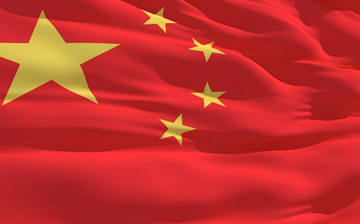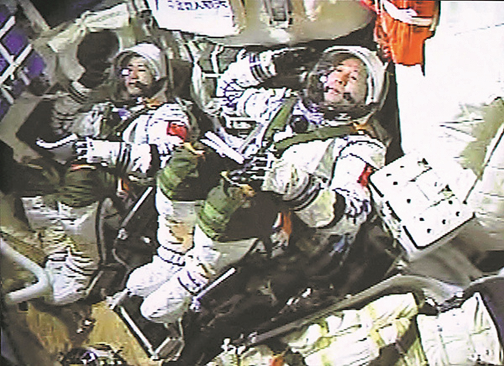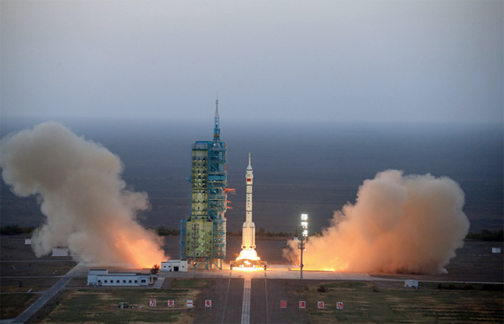
An article just published at China.org.com highlights a monumental step in China's space exploration mission.

Launching... Astronauts Jing Haipeng (right) and Chen Dong within the Chinese spacecraft.
Photo is courtesy of Xinhua.
On Monday morning, China's Shenzhou XI manned spacecraft was launched from the Jiuquan Satellite Launch Center in northwest China atop a Long March 2F rocket. Aboard were astronauts Jing Haipeng and Chen Dong. After a two-day journey, they will dock with, and spend 30 days living and working together, in Tiangong II, a new Chinese space lab. This visit will be double the longest stay by Chinese astronauts in space.
Tiangong II was launched in mid-September to replace the Tiangong I space lab, after the latter was retired in March, all according to plan. Even more important than the length of stay, the mission is a giant step toward China having a permanent space station—experts believe this space station is likely to be the world's only such entity after the International Space Station is retired around 2024.
The Shenzhou XI-Tiangong II mission is a sign of China's full readiness for a space station, according to Lieutenant General Zhang Yulin, deputy head of the Central Military Commission's Equipment Development Department and the manned space program. Once the station is put into use, China will launch "several space missions" each year to transport astronauts, engineers and even tourists, Zhang said.

A Long March II F carrier rocket lifts the Shenzhou-11 manned spacecraft into space from the Jiuquan Satellite Launch Center.
Photo is courtesy of Xinhua.
As Chinese across the nation watched the launch, President Xi Jinping sent a congratulation message from the Indian state Goa, where he was attending a summit of the emerging-market countries over the weekend.As part of the current mission, the Shenzhou XI-Tiangong II combination will test rendezvous and docking technologies, verify the life-support capability of the spacecraft-space lab combination, conduct research and test engineering experiments, according to Wu Ping, deputy director of the China Manned Space Agency.
The journey's most important task is to examine China's technologies and equipment to support long-term stays in space and to observe the physical and psychological effects on astronauts, explained Shi Yong, a senior designer of manned spacecraft at the China Academy of Space Technology. He said the astronauts will use a treadmill, exercise bike and other equipment in Tiangong II to keep fit and they will also wear a special uniform to avoid muscle atrophy.
Zhang Bonan, chief designer of Shenzhou XI at China Academy of Space Technology, said the reason the spacecraft is carrying two astronauts instead of three like its predecessor, the Shenzhou X, is that the spacecraft and space lab have a limited accommodation capacity. Additionally, the astronauts' duration in space is longer. Plus, the Tiangong II's life-support system does not use recycling technologies, which limits the number of astronauts, he said, although future additions to the space station will include such technologies.
Experts said the Shenzhou XI-Tiangong II mission, together with the previous missions, would pave the way for the nation's aspiration to have a permanent manned station, which planners say will consist of three parts—a core module that will be attached to two labs, each weighing about 20 metric tons. China plans to launch the core module of the space station in about 2018 and complete the construction of the whole station around 2022.

